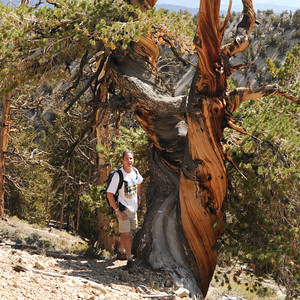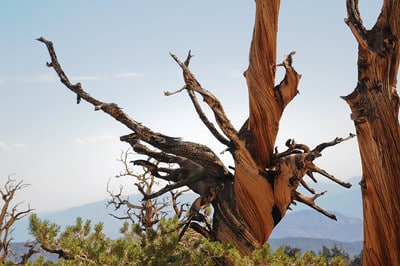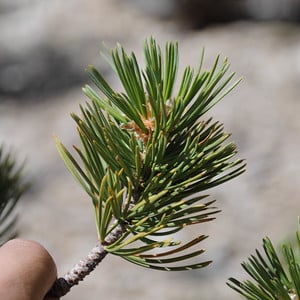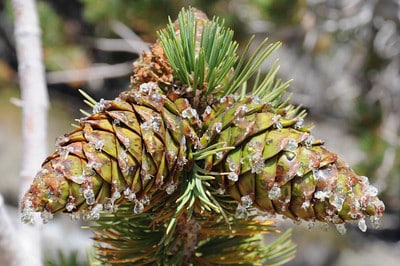The Limber pine (Pinus flexilis) knows what it’s like to be second best. Well known for growing alongside more “notable” pines like the Foxtail or Bristlecone, the Limber rarely gets the spotlight. Which is too bad as it’s a remarkable variety. The Limber can eke out a living where only a handful of trees can make it. They can live, in some cases, for over 3,000 years. One reason for this is the pine’s great flexibility. Its branches, as the name implies, are rubber-like in their flexibility and the tree can take on quite twisted shapes as a result – a trait that inspires appreciation from the bonsai crowd.
On a recent visit to the White Mountains – yes, to see the Bristlecone pines – I gained a new appreciation of the variety. Here are some photos of my favorite growing along the Methuselah Trail in the Ancient Bristlecone Forest, part of the Inyo National Forest.

Old Limber pine

John posing for perspective

Same tree – deadwood detail
Its foliage is easy to spot: pale green, needles in bunches of five, bright white branches – usually bare save for the past few years’ needles – and gray-brown bark. Its cones are pointy and green with flat scales.

Limber pine foliage

Limber pine cones
Keep an eye out for your favorites the next time you’re wandering around treeline in the Western US and Canada. Although they don’t have their own National Park, I imagine that there are plenty of breathtaking specimens out there.
Subscribe to Bonsai Tonight
New Posts Delivered Every Tuesday and Friday
Oleg says
Amazing stuff you have here, I really like your work. I would also like to share my blog http://www.bonsaing.blogspot.com where I collected information based on different resources and my personal experience.